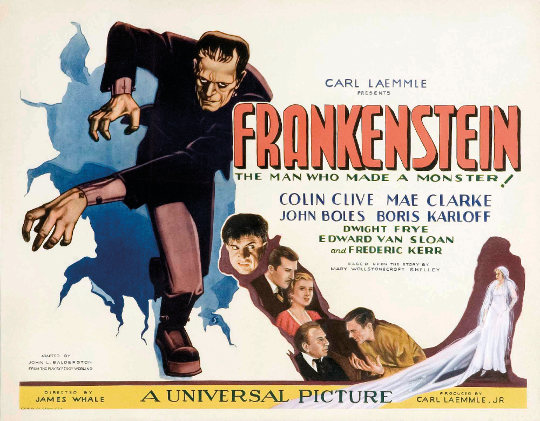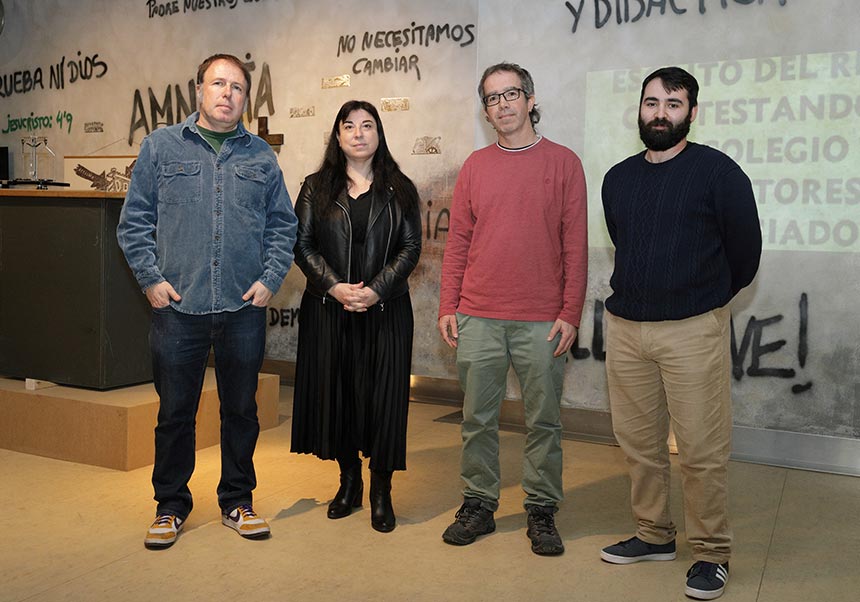An exhibition about Frankenstein at the Palau de Cerveró reviews the relationship between science and literature
- Office of the Vice-Principal for Culture and Society
- November 22nd, 2017

Coinciding with the 200th anniversary of the publication of the most famous and well-known novel by Mary W. Shelley, the Palau de Cerveró of the Universitat de València hosts the exhibition 'Frankenstein or the modern Prometheus. Dialogues between science and literature.” The exhibition, produced by the Office of the Vice-Principal for Culture and Equality of the Universitat de València and the The Lopez Piñero Institute for the History of Science and Medicine, open its doors on Wednesday 22 November at 7 p.m. and can be visited until 23 February.
According to the professor of the Universitat de València and curator of the exhibition, Pedro Ruiz Castell, the exhibition “aims to show the relationship between science and literature, which was consolidated, mostly during the nineteenth century, when a series of speeches were articulated, within the framework of Romanticism, which sought to harmonize understanding and imagination, at the same time as challenging the norms of objectification, even in specialized literature and among the scientific community. "
The title of the exhibition recall how the science and literature, far from being considered as independent cultures, have maintained a constant dialogue throughout history. In fact, the way in which literature has historically represented scientific activity has been fundamental for temp and prepare the reading public to assume certain scientific and technological proposals, as well as it has been a privileged tool through which to facilitate reflection criticism about the ethical and social implications of science. In this sense, the work of Mary W. Shelley is shown as an intriguing case study from which to address all these issues.
The exhibition is structured in four parts. Firstly, the introduction reflects about science and literature in European Romanticism, and addresses the issue of the authorship of the work, published at first in 1818 anonymously. The second part is aimed to scientific discussions which had influence the elaboration of the Mary W. Shelley’s novel: from the importance of Scientifics expeditions and the anatomic question to the consideration of the electricity as vital fluid. In the third part, there is an expository editing that plays visually with the moment of creation, both the work and Victor Frankenstein. In fact, the exhibited objects invite us to reflect around the last part of the exhibition, destined to explore the impact and de consequences of this work, that is, addressing issues related to the construction of identity, the responsibility of the scientist and the development of areas like physiology and electro medicine.
“Frankenstein or the modern Prometheus. Dialogues between science and literature” shows more than thirty original pieces, including works by Alexander von Humboldt and devices of great historical value, such as a charming Wimhurst machine and an ingenious electro medical device, some disturbing surgical instruments and an extraordinary X-ray equipment of the early twentieth century. Most of the pieces come from the University of Valencia funds, with a particularly important presence of works from the Vicent Peset Llorca Library and the scientific instruments of the scientific-medical collection that houses the López Piñero Institute of the History of Medicine and Science .
File in: Exposicions , Cultura , Palau de Cerveró
















